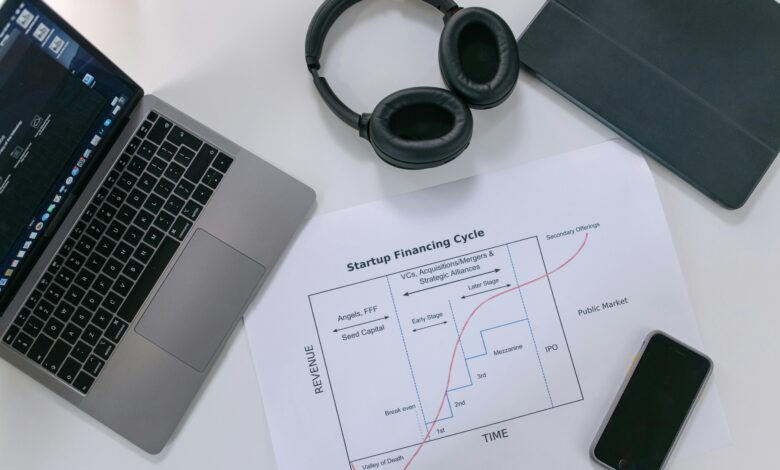The Best SaaS Tools for Financial Management

In today’s fast-paced digital world, managing finances efficiently is crucial for both individuals and businesses. Software-as-a-Service (SaaS) tools have revolutionized financial management by offering cloud-based solutions that are accessible, scalable, and cost-effective. These platforms streamline tasks like budgeting, accounting, invoicing, expense tracking, and financial reporting, saving time and reducing errors. In this article, we’ll explore some of the best SaaS tools for financial management, catering to a variety of needs—from personal finance to enterprise-level operations.
1. QuickBooks Online
Overview:
QuickBooks Online is one of the most popular SaaS tools for small businesses and freelancers. It offers a comprehensive suite of features for accounting, bookkeeping, and financial reporting.
Key Features:
- Automated Bookkeeping: Automatically categorizes transactions and reconciles bank accounts.
- Invoicing and Payments: Create professional invoices and accept payments directly through the platform.
- Expense Tracking: Capture receipts and track expenses effortlessly.
- Tax Preparation: Simplifies tax calculations and ensures compliance with local regulations.
Why It’s Essential:
QuickBooks Online is user-friendly and integrates seamlessly with other business tools like PayPal, Shopify, and Square, making it ideal for entrepreneurs and small business owners.
2. Xero
Overview:
Xero is another leading cloud-based accounting software designed for small to medium-sized businesses. Known for its intuitive interface and robust functionality, Xero simplifies financial management.
Key Features:
- Real-Time Collaboration: Allows accountants and clients to work together in real-time.
- Bank Reconciliation: Automates the process of matching transactions with bank statements.
- Inventory Management: Tracks stock levels and generates purchase orders when needed.
- Multi-Currency Support: Ideal for businesses operating internationally.
Why It’s Essential:
Xero’s emphasis on collaboration and automation makes it a favorite among growing businesses looking for an all-in-one financial solution.
3. FreshBooks
Overview:
FreshBooks is tailored for freelancers, solopreneurs, and service-based businesses. It focuses on simplicity and ease of use while providing powerful features for invoicing and time tracking.
Key Features:
- Customizable Invoices: Create branded invoices with late payment reminders.
- Time Tracking: Log billable hours and convert them into invoices automatically.
- Expense Management: Snap photos of receipts and organize expenses easily.
- Client Portal: Clients can view invoices, make payments, and communicate securely.
Why It’s Essential:
FreshBooks is perfect for freelancers who need a straightforward yet feature-rich tool to manage their finances without the complexity of full-scale accounting software.
4. Zoho Books
Overview:
Zoho Books is part of the larger Zoho ecosystem, offering seamless integration with other Zoho products. It’s an excellent choice for businesses already using Zoho CRM or other tools within the suite.
Key Features:
- Project-Based Accounting: Track project-specific income and expenses.
- Automation Rules: Set up workflows to automate repetitive tasks like sending reminders.
- Vendor Management: Manage bills, payments, and vendor relationships efficiently.
- Compliance Tools: Stay compliant with GST, VAT, and other tax regulations.
Why It’s Essential:
If you’re already embedded in the Zoho ecosystem, Zoho Books provides a cohesive experience for managing finances alongside customer relationship management (CRM) and other business functions.
5. Wave
Overview:
Wave is a free SaaS tool designed for freelancers, startups, and small businesses. Despite being free, it offers a surprising range of features for basic accounting needs.
Key Features:
- Free Accounting Software: Includes invoicing, expense tracking, and financial reporting at no cost.
- Payroll Services: Paid add-ons for payroll processing in select countries.
- Credit Card Processing: Accept credit card payments with competitive fees.
- Receipt Scanning: Upload receipts and categorize expenses digitally.
Why It’s Essential:
Wave is an excellent option for budget-conscious users who need essential financial management features without subscription costs.
6. Expensify
Overview:
Expensify specializes in expense management, making it a go-to tool for businesses that need to track employee expenses, travel costs, and reimbursements.
Key Features:
- SmartScan Technology: Automatically scans and categorizes receipts.
- Corporate Cards: Issue virtual or physical cards with spending controls.
- Travel Booking Integration: Syncs with apps like Airbnb and Uber for automatic expense capture.
- Approval Workflows: Streamline the reimbursement process with customizable approval chains.
Why It’s Essential:
For companies with frequent travelers or remote teams, Expensify simplifies expense tracking and ensures accurate record-keeping.
7. YNAB (You Need A Budget)
Overview:
YNAB is a personal finance tool focused on helping individuals take control of their budgets. Its zero-based budgeting approach encourages users to allocate every dollar intentionally.
Key Features:
- Zero-Based Budgeting: Assign a job to every dollar you earn, eliminating waste.
- Goal Setting: Set savings goals and track progress toward milestones.
- Sync with Banks: Connect your accounts to import transactions automatically.
- Educational Resources: Offers workshops and webinars to improve financial literacy.
Why It’s Essential:
YNAB is perfect for individuals seeking to break the paycheck-to-paycheck cycle and build healthier financial habits.
8. Mint
Overview:
Mint is a widely used personal finance app that helps users track spending, create budgets, and monitor credit scores—all in one place.
Key Features:
- Budget Tracking: Categorizes transactions and alerts you when you exceed limits.
- Bill Reminders: Sends notifications for upcoming bills to avoid late fees.
- Investment Tracking: Monitors investment portfolios alongside other financial data.
- Credit Score Monitoring: Provides free access to your credit score and tips for improvement.
Why It’s Essential:
Mint’s simplicity and free pricing model make it a great starting point for anyone new to personal finance management.
9. SAP Business One
Overview:
SAP Business One is an enterprise-grade SaaS tool designed for mid-sized businesses. It combines financial management with operational tools like inventory and CRM.
Key Features:
- Financial Reporting: Generate detailed reports for better decision-making.
- Inventory Control: Manage stock levels and streamline procurement.
- Sales and Customer Management: Track leads, opportunities, and customer interactions.
- Scalability: Grows with your business as needs evolve.
Why It’s Essential:
For businesses requiring advanced functionality and scalability, SAP Business One delivers a comprehensive solution for end-to-end financial management.
10. Divvy
Overview:
Divvy is a modern spend management platform that combines expense tracking, budgeting, and corporate cards into a single system.
Key Features:
- Virtual Cards: Create unique cards for different departments or projects with set spending limits.
- Real-Time Spend Visibility: Monitor expenditures as they happen.
- Budget Allocation: Distribute funds across teams and track usage.
- No Interest Fees: Unlike traditional credit cards, Divvy charges no interest on balances.
Why It’s Essential:
Divvy is ideal for businesses looking to gain granular control over company spending while simplifying expense reporting.




